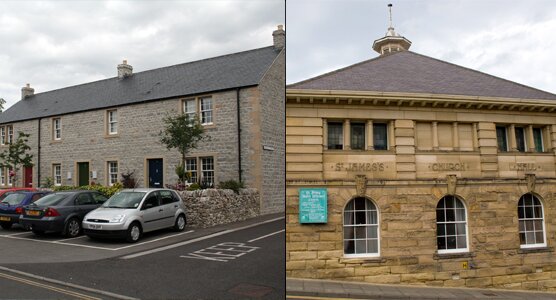Affordable Rural Housing

High house prices in recent years have made it increasingly difficult for people to get on the housing ladder or to rent a home at a market rent. Despite the effects of the current economic downturn and short to medium term price fluctuations in housing, the long term problem of housing supply and affordability in rural areas is likely to remain.
In rural areas, where house prices had risen faster and higher than in urban areas, this has become a particularly acute problem for the young and others on low incomes. Recent research has shown that a large proportion (45% in 2006) of newly formed households in rural areas cannot afford to set up home in the ward where they currently live. As the countryside often appears to be prosperous, housing problems can be less visible than in towns and cities, but rural incomes are on average lower than urban incomes and only 5% of homes in rural areas are affordable compared to the national average of 23%.
English Heritage supports the Government’s aim to increase affordable housing in rural areas and, in 2009, issued guidance Affordable Rural Housing and the Historic Environment intended to help schemes to complement and enhance the historic character of our market towns, villages, hamlets and farmsteads.
In order to inform production of this guidance, English Heritage commissioned a survey to examine the implications for the historic environment of the provision of affordable rural housing. Evidence was gathered from housing associations, rural housing enablers, local authorities and others. The report on the research Affordable Rural Housing and the Historic Environment: Project Report for English Heritage demonstrated that heritage considerations – archaeology and new build in historic areas – are not seen as a major impediment by the affordable rural housing sector. The report on the research was published by Forum Heritage Services.
A series of case studies of affordable housing schemes involving the adaptive re-use of historic buildings or new build in sensitive historic areas are also provided*. These include:
- St James’s United Reformed Church Centre, Alnwick
- Castle Acre, King's Lynn and West Norfolk
- The Foyer Project, North Street, Wisbech, Cambridgeshire
- Unicorn Court, Weobley, County of Herefordshire
- Corfe Castle, Purbeck
- Simsay Fields, Cerne Abbas, Dorset
- Iwerne Minster, Tower Hill, Blandford Forum
- Wimborne St Giles, Dorset
- Ambleside Methodist Church, South Lakeland
- Abbotsbury, Dorset
- Blanchland, Northumberland
- Heughscar Close, Pooley Bridge, Cumbria
- Mill Close, Orford, Suffolk Coastal
- New Street, Bakewell, Derbyshire, Peak District National Park Authority
- Miracle Court, Bakewell, Derbyshire, Peak District National Park Authority
* The case studies identify those aspects of each scheme English Heritage considers to be strengths, although we do not necessarily endorse all aspects of the scheme.
What's New?
-
The National Heritage List for England is now live on the English Heritage website.
-
Welcome to the HER21 page. This page offers access to the full suite of HER21 project reports.
